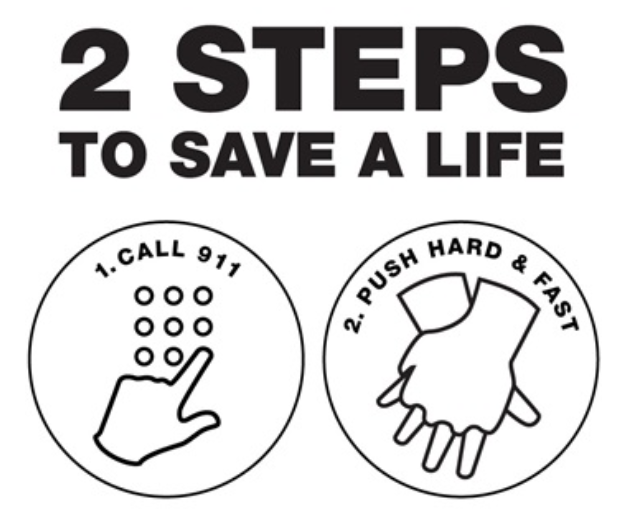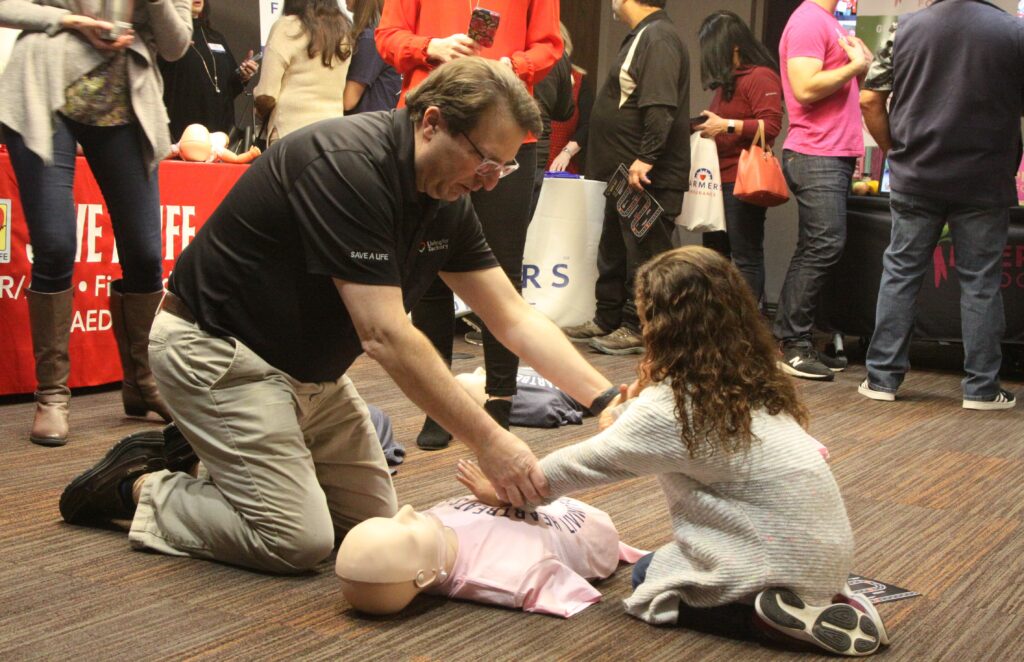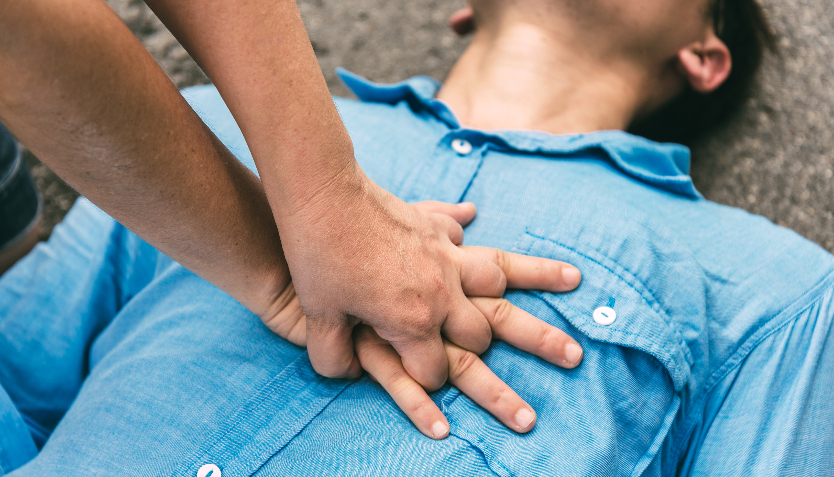If you’ve taken a CPR class in the past, you likely practiced a combination of chest compressions, rescue breaths and AED use in your training. But with approximately 70% of cardiac arrests happening at home and a majority of Americans feeling unsure of how to respond during a cardiac emergency (1), Hands-Only CPR provides a life-saving option that can be performed anywhere. Follow along as we break down all the need-to-know information on Hands-Only CPR that may just save the life of someone you love one day.
Hands-Only CPR: What It Is
Hands-only CPR is a simplified technique where a bystander uses chest compressions to keep blood pumping to a victim’s heart. It involves two simple steps: calling 911 and pushing hard and fast in the center of the chest at 100 beats per minute or greater. Hands-Only CPR does NOT involve the use of breaths, but can be just as effective as CPR with breaths for adults [1].

What are the Benefits of Hands-Only CPR? Is It Effective?
One of the greatest benefits of Hands-Only CPR is that it can be used anywhere and at any time. This is particularly useful in homes, where most sudden cardiac arrests occur and AEDs are not present or easily reachable. Hands-Only CPR can also be a good option when an infectious disease may be present in a victim, such as COVID-19.
With a simple, two-step process, Hands-Only CPR provides critical assistance to a victim until further medical help arrives, and can double or triple survival rates when used immediately after collapse [1]. It is important to note that the American Heart Association recommends chest compressions and breaths for infants and children suffering cardiac arrest. This is one of many reasons why CPR certification courses are still extremely important to learn these skills, in addition to AED use.
Who Can Learn It?
ANYONE! It is critical that every person with the ability to call 911 and perform chest compressions knows how to do so. Only 10% of sudden cardiac arrest victims survive, and this number diminishes with each minute CPR is not administered [1]. The more people feel comfortable and ready to perform these two steps, the more we can improve these statistics and give cardiac arrest victims a second chance at life. Even children who are old enough to understand can learn these simple principles early and grow up to be prepared Heart Heroes!

The Bottom Line
Bystanders can make the world of a difference for a sudden cardiac arrest victim by simply being willing to help. You have the power to be the difference between life and death for someone in need just by using your own two hands and a cell phone. Sudden cardiac arrest doesn’t wait, so neither should we!


